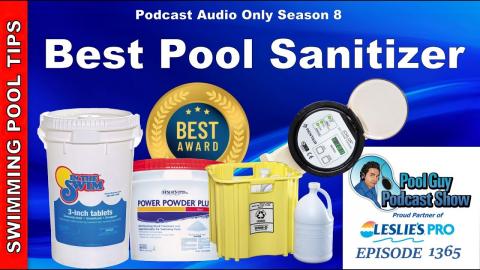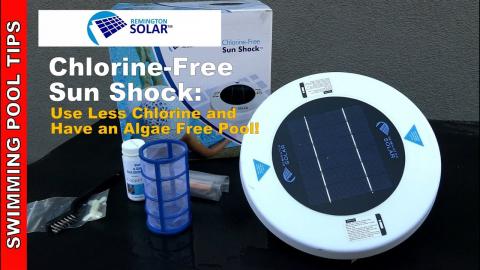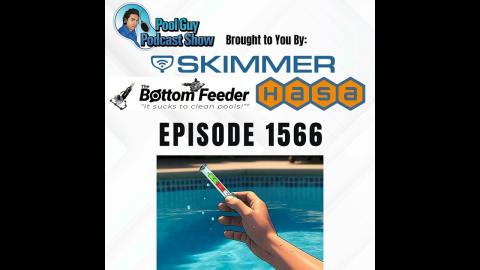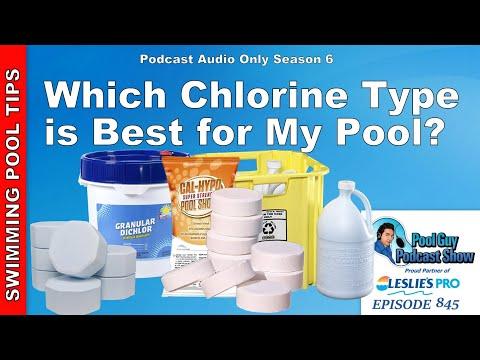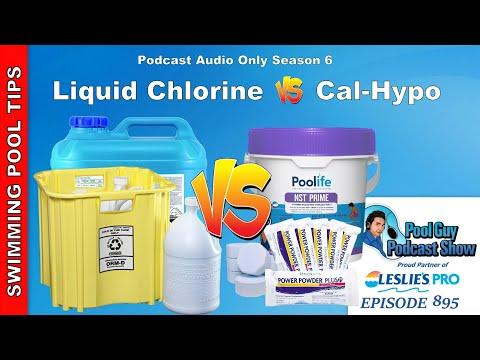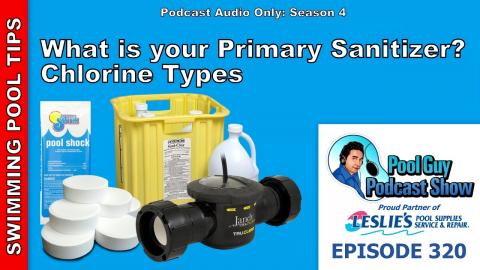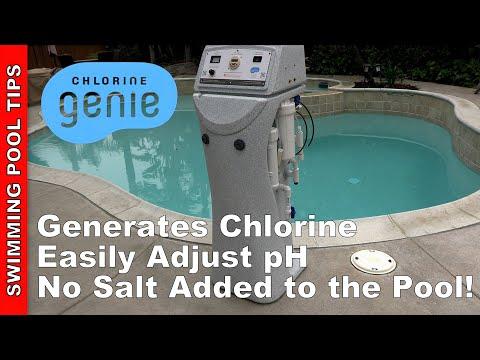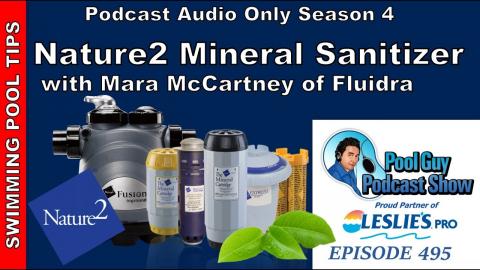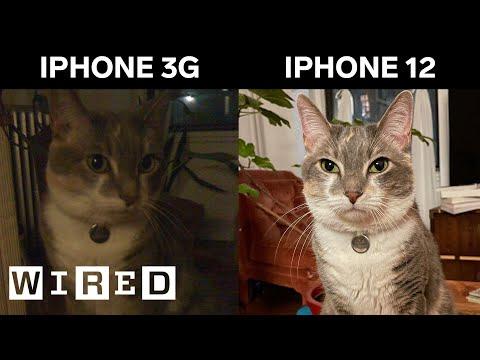Why Liquid Chlorine is the Best Sanitizer for Your Swimming Pool
Description
I get asked often what the best chlorine type is to use in a pool. There are a great many choices out there and the best one is one of the oldest methods, straight liquid chlorine. In the old days, it used to be chlorine gas but with regulations and such that practice has disappeared. Liquid chlorine is strong and has the least side effects for your pool.
Liquid Chlorine or Bleach is the tried and true standard chemical of choice for most pool service professionals. It is easy to use and relatively inexpensive and it has the least side effects of any of the chlorine you can choose from. It is usually sold in 12.5% active chlorine per gallon with Bleach coming in at about half that strength at 6.5%. It will raise the pH slightly, but it does not contain any Stabilizer or Conditioner making it ideal for all pool types. This means that when you add a gallon of liquid chlorine and your Conditioner level (CYA) is 50 ppm it will stay at 50 ppm even if you add 20 gallons of liquid chlorine.
Pros:
Fastest acting of all chlorine types
Will not raise your CYA level
Safe for all pool types
Easy to use
Cons:
Breaks down by the Sun’s UV Rays so your pool needs a CYA level of 30-50 ppm
Short shelf life so rotate stock or buy fresh chlorine when needed
The gallons can be heavy compared to a bag of shock
Is seen as weaker than shock based on the low percentage of chlorine but is stronger
Cal Hypo is very popular and there are a number of reasons why it is widely used in the industry. It is easy to carry and comes in different strengths 60-75% active chlorine. One of the major side effects is that it contains calcium, so over time it will raise your pool’s calcium hardness. Not an issue if you live in an area with soft water but I caution the use in areas with hard water. It also has a high pH of around 12 so it will raise the pH in a pool if you use a significant amount each week.
Pros:
Strong and easy to use
Does not contain Conditioner so it will not raise the pool’s CYA levels
Safe for all pool surface types but use caution with a vinyl liner
Cons:
Raises Calcium Harness in a pool
Raises the pH in a pool
Clouds up the pool water
Dichlor is a very popular form of chlorine and the granular form makes it very easy to measure and use in a pool. It is pH neutral which means it will not raise or lower the pool pH in any significant way. It does contain Conditioner, about 45%-50% by weight. So, if you add 10 lbs. of Dichlor to a pool you are also adding about 5 lbs. of Conditioner. Over time this will increase the pool’s CYA levels. Just don’t overuse it because of the high amount of Conditioner in the product. It is usually about 62% active chlorine by weight.
Pros:
Easy to use and powerful
pH neutral
Safe for all surface types
The long shelf life of 2-3 years
Cons:
Adds Conditioner to the pool
Tri-Chlor or Trichloroisocyanuric Acid comes in three forms. The familiar 3” tablets that slowly dissolve in your pool, a very fine powder shock and a granular form. About 50% of the Tri-Chlor by weight is Conditioner. So, a 50 lbs. bucket of tablets is about 25 lbs. of Conditioner. If you overuse tablets your pool’s CYA level can go up rapidly. Trichlor tablets are usually 95% to 99% active chlorine. Tri-Chlor tablets have a very low pH of 2-3 so they will lower the pH in your pool.
Tri-Chlor granular is a very powerful stuff. It is basically the Tri-Chlor Tablet grounded up in granular form and is 99% active chlorine. Use with extreme caution as the Conditioner in the granular can stain the plaster. The CYA in the tablet is basically acid and if you let it pile up on the pool surface it will stain the plaster as if you dropped a 3” Tablet into the pool. Never add this to the skimmer and if you do use it for Black or Mustard algae make sure it is evenly dispersed on the pool surface. Not for use in Vinyl, Fiberglass or color plaster pools.
Pros:
Very strong and slow dissolving in tablet form so it releases chlorine all week long
Easy to use and affordable
Cons:
Can stain the pool surface
Contains 50% CYA by weight
Visit my Website: http://www.swimmingpoollearning.com/
eBook: https://www.swimmingpoollearning.com/swimming-pool-care-ebook
YouTube Video Index: http://pool
mandave.blogspot.com/2014/03/swimming-pool-tips-reviews-how-to-video.html – A list of all of my videos.
YouTube: https://www.youtube.com/channel/UCq33AlEZl8QBmxatFEwknew
Visit my Website: http://www.swimmingpoollearning.com/
eBook: https://www.swimmingpoollearning.com/swimming-pool-care-ebook
Blogger: http://poolmandave.blogspot.com/
Facebook: https://www.facebook.com/swimmingpoollearning/
Twitter: https://twitter.com/Mrdgvb1
Join me on Patreon: https://www.patreon.com/poolguycoaching
Podcast: http://www.buzzsprout.com/110832
Podcast Website: https://www.thepoolguypodcastshow.com/
Coaching Site: https://poolguycoaching.com/


